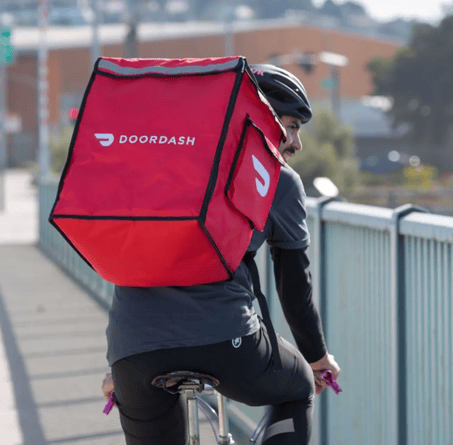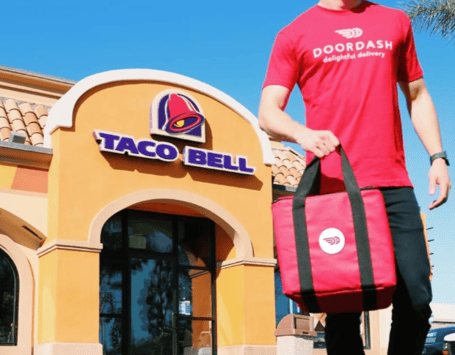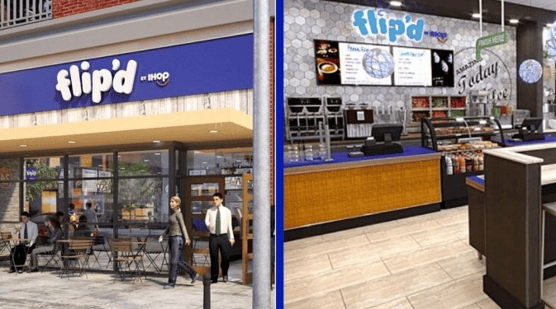Is the food delivery tech bubble about to burst?
February 26, 2020

There’s no question that the demand for online food delivery is growing. Aggregators like Doordash, Grub Hub, and Uber Eats have led the charge to building a $10 billion a year industry, roughly the size of the nation’s fifth largest restaurant chain. And speaking of chains, they’ve been scrambling to figure out their delivery strategies, whether by developing partnerships, by developing their own delivery services, by creating “ghost” kitchens that cook just for delivery, or by ignoring reality entirely.
And yet, not all is well in the ever-evolving world of delivery. Losses are piling up among the key players, leaving investors worried about the possibility of another WeWork style collapse on the horizon. Whether that happens or not, there’s clearly trouble with the status quo, and somewhere between the kitchen, the logistics, and the consumer, something is going to have to give. So let’s examine the factors that render the current state of affairs unsustainable, and explore where it all might lead.
Factor #1: Consumers won’t tolerate higher prices.
Thanks to decades of low cost pizza and Asian takeout, consumers have long equated delivery with value. And while they’re willing to pay somewhat more for the convenience, the value proposition of delivery gets diminished with every hike in prices and fees. A $6 burrito? Perhaps. But a $12 burrito? Not likely.

Part of Taco Bell's appetite appeal comes with the price tag. Should delivery fees pile too high, that could all change.
Currently, it's the restaurants that bare much of the brunt with regards to fees, a burden they’ve made quite clear they can't sustain. Which leads to the next factor…
Factor #2: The traditional restaurant model wasn't made for this.
There’s a simple reason why pizza brands like Domino’s have thrived in delivery: they’re financial and operational models were built for it. Compare that to your average casual dining restaurant, with its larger footprint and paid staff. Put simply, it costs more for Chili’s to make a profit on a burger than it does for a delivery first brand. It’s a model that was made for sit down service that comes from filling and turning tables. Fewer people dining in means fewer people on staff to serve them, which invariably leads to empty, depressing restaurants with declining service– something we discussed in a recent Dig In podcast. A vicious cycle with the potential to destroy brand value and ultimately the brand themselves.
Factor #3: Ghost kitchens are not a sure thing.
As NPR recently reported, while the ghost kitchen concept looks good on paper, making it work in the real world is a trickier proposition. They cited the story of Alacarte Delivery in Miami, which established an entire family of ghost kitchen brands catering exclusively to the delivery customer. Pizza, Mexican, rotisserie chicken—they developed fifteen delivery only brands. But they soon discovered that without name recognition, customers can be hard to come by. They couldn’t compete with brands that have high awareness levels, and after two years, they closed for good.
Which may leave established brands in an enviable position as they leap into the world of either ghost kitchens, or dedicated delivery sub-brands, like IHOP is launching under the banner of Flip'd.

IHOP's new Flip'd concept will include self service and takeout options, plus a kitchen designed for easy delivery fulfillment.
Factor #4: Indirect competition is heating up.
For consumers, it’s no longer about dining out versus dining in. It’s really about how they wish to dine in, and delivery is just one possibility. Major grocery chains like Wegman’s and Whole Foods have stepped up their prepared food offerings, making it easy to grab a complete family meal to go. And meal kit services like Blue Apron are still hanging on, offering a blend of convenience and experience young families crave, that they can’t get from by clicking an order on a smart phone.
For consumers who crave variety, it’s possible that none of these competitors will ever win outright. Rather, they will continue to be locked in an ongoing struggle for greater share of their customer’s stomachs. And those stomachs are likely to show little long-term loyalty to any of them.
Factor #5: Delivery brands can’t go on losing money.
As we mentioned in the opening, even the most forward thinking investors will only tolerate losses for so long. DoorDash may be viable long-term, but it’s not Amazon (who’s latest foray into meal delivery is on shaky ground of its own). Given that consumers will only pay so much for food they could also pick up on the commute home, it’s going to fall on the restaurants and delivery brands to solve the value proposition in a way that makes sense for all parties. If they can’t, the losses will continue to pile up, and investors will eventually turn bearish of the entire concept.
At some point between the brand, the delivery service, and the consumer, someone has got to give to make the numbers work. And at this point, no one is budging. How the cost of making and delivering food ultimately gets distributed will determine whether the current model lives on, or something else comes along to take its place.




